
Omnichannel Marketing: Complete eCommerce Guide [2024]
With the evolution of marketing strategies and constant changes in consumer behavior, it’s hard to understand whether omnichannel marketing is just a buzzword or a valuable strategy for your business.
Let me assure you that by getting it right, you’ll take customer experience to a whole new level.
In this blog post, you’ll find information and practical advice on:
- what omnichannel marketing really is
- how it differs from its “doppelganger” multichannel marketing
- how to implement an omnichannel strategy for your business
- omnichannel marketing examples from known businesses
So let’s get started!
What Is Omnichannel Marketing?
The digital marketing landscape changes dynamically and it has seen the emergence of new terminology, which can be confusing for both marketers and business owners alike.
The most common misconception is that omnichannel marketing and multichannel marketing are one and the same.
Let’s clarify things.
Omnichannel Marketing Definition

Omnichannel marketing is the utilization of both digital and traditional marketing channels to create a unified and seamless experience for the customer from the first touchpoint to the last.
In essence, the channels work together and not individually, sending a personalized message to each customer regardless of their engagement and the channels used in the process.
Here are some examples that illustrate how omnichannel marketing works:
- Customers getting an SMS or email about a certain promotion while shopping in-store
- Customers seeing a retargeting ad on Facebook containing the product they abandoned in their cart
What Is Omnichannel?
Omnichannel is the concept of using all the available channels in order to create a consistent and unified experience for customers. Both traditional and digital channels are included, as well as point-of-purchase, in-store and online experiences.
This means that the customer could be shopping from a desktop or mobile device, by telephone, or even with a physical presence in-store and the experience would be seamless. This even extends to customer support, thanks to omnichannel contact centers that reach customers wherever they are – be it through email, social media, live chat, or something else.
And the trend is only gathering momentum. In fact, BigCommerce predicts that in the coming years, the majority of eCommerce interactions will be omnichannel experiences.
Now let’s explore the purpose of this strategy.
What Is the Purpose of Omnichannel Marketing?
The purpose of omnichannel marketing is to put the customer and not the brand at the center and offer a personalized and seamless experience for customers no matter where they are in the customer journey.
Customers bounce between different channels when they want to purchase an item, so brands need to create a consistent experience rather than simply target them through many different channels.
Why Is Omnichannel Marketing Important?
Through an omnichannel marketing approach, brands can retain a continuous interaction with their customers, thus adapting to their behavior and needs, which is especially critical at the moment they are ready to take action.
Customer experience is a vital factor determining long-term engagement and brand loyalty, so an omnichannel approach is an ideal way to establish a long-lasting relationship with your customers.
If you still think all this sounds like the good ol’ multichannel marketing, fret not. The differences between multichannel and omnichannel marketing will be shown in the descriptive table below.
Multichannel vs Omnichannel Marketing
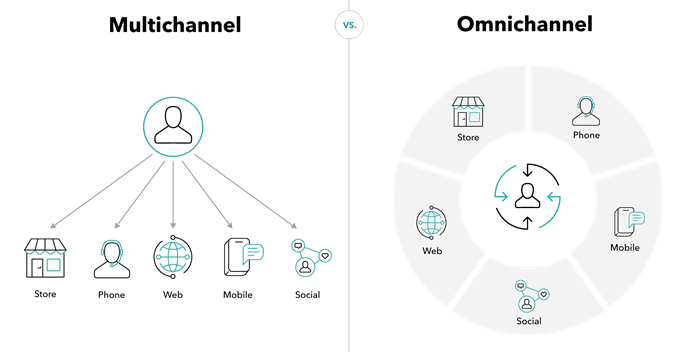
While at first glance omnichannel and multichannel marketing seem the same due to the use of multiple channels to reach customers, their differences are clear, and most importantly, each of these approaches leads a business into an entirely different path.
So let’s see what these differences are:
| Multichannel | Omnichannel | |
| Messaging | Static (channels don’t update or personalize) | Relevant/Adaptive (channels update as customers engage with the brand) |
| Center of strategy | The brand | The customer |
| Main focus | Engagement | Consistency (in customer experience) |
| Internal Departments | In silos (data exchange is limited or non-existent) | Data is shared (all departments are on board) |
- In multichannel marketing, the brand is placed at the center of the strategy and customers receive the same message across all channels. On the contrary, omnichannel marketing puts the customer at the center to deliver personalized messages no matter the channel.
- In multichannel marketing, users have access to communication options that aren’t necessarily synchronized or connected, but in an omnichannel experience, all the channels are connected so you can move between them seamlessly.
- For omnichannel, all internal departments (i.e., sales, marketing, social media, customer success) must be connected and in tune with the messaging, while in a multichannel approach the departments mostly work in silos, so data is not shared.
- The focus in a multichannel approach is to reach potential customers through the maximum possible number of channels, in short, achieve the most customer engagements. On the other hand, omnichannel aims to provide a holistic and consistent customer experience across all channels, thus building a strong customer relationship between the brand and consumers.
But does an omnichannel marketing strategy work and do customers respond to it?
8 Omnichannel Marketing Statistics: What Are the Benefits Of An Omnichannel Strategy in eCommerce?
The general perception among industry professionals is that omnichannel marketing is “the north star” for eCommerce businesses.
To that end, we’ve gathered the 8 most prominent omnichannel marketing statistics that illustrate the benefits of implementing an omnichannel strategy for your eCommerce business.
- Omnichannel campaigns in which marketers used three or more channels earned 18.96% engagement, compared to single-channel campaigns who only received 5.4%.
- The purchase rate of omnichannel campaigns is 287% higher than the purchase rate of single-channel campaigns, indicating that omnichannel campaigns yield more revenue for businesses.
- Additionally, customers spent on average 13% more when they engaged with campaigns having three or more channels than those who engaged with single-channel campaigns.
- Customers show more loyalty to brands engaging with them across channels. Specifically, customer retention rates for omnichannel campaigns are 90% higher than for single-channel campaigns.
- 80% of consumers state they are more likely to purchase from a company if it offers personalized experiences. Lack of personalization in consumer experiences means lost revenue for a business.
- According to estimations, by 2027, 41 billion IoT devices will take over matters.
- An impressive 85% of digital consumers start the purchasing workflow on one device but finish it on another. This indicates that omnichannel consumers are a thing of the present.
- eMarketer increased their forecast for 2020 eCommerce retail sales from 20% growth to 30%, thus making an omnichannel marketing approach even more important in 2021 and beyond.
I believe we’ve seen some tangible benefits of omnichannel marketing and why it is beneficial in eCommerce. Now, let’s see how a business can start implementing such a marketing strategy.
Omnichannel Strategy: Step-by-Step Process For eCommerce Businesses
The trend towards omnichannel marketing has not been influenced only by consumer behavior itself. Ecommerce store owners and marketers alike have understood the benefits of utilizing an omnichannel strategy and most of them plan to implement one.
Now omnichannel marketing is the cross-channel strategy able to follow customers on their intricate customer journey and satisfy their needs at all touchpoints.
So without further ado, let’s see how you can do this for your business in 4 straightforward steps.
Step #1: Get All Teams On Board (Break Down the Organizational Silos)
The first step in the process is to lay the groundwork, the foundations, for the proper implementation of the strategy. To do that, it’s vital that every member of your team is on board with your omnichannel strategy.
Omnichannel requires the customer at the center of the strategy, which means putting their data at the center of customer operations.
In this way, all members of your team will be able to leverage that data to create a better experience for the customer, thus supporting the customer-centric character of the omnichannel approach.
For example:
- The marketing team needs that data to deliver relevant and personalized messages to customers at the right time.
- The sales team can use that data to identify the customers’ pain points and help them identify the best solution for their needs.
- The product team can leverage that data to merchandise the products in the right way as well as to better understand customers’ immediate needs.
- Also, customer success needs that data to ensure that customers remain satisfied with the product and ideally turn into lifelong customers.
So, putting customer data at the center and sharing them across your teams will improve the overall response and interaction with them.
Moreover, to have a successful omnichannel marketing strategy you have to break down the organizational silos. The same way your channels will be working together to deliver a better customer experience, so should your teams.
To achieve that, you can use a Customer Relationship Management tool (CRM) so that customer data is readily available and, if possible, foster collaboration between different departments by training employees in skills from other departments.
Step #2: Collect Customer Data And Analyze Them
As we said before, to implement an efficient omnichannel marketing strategy, you have to learn everything you can concerning your customers.
So, you need to start collecting as much data as possible. In case you don’t have data right from the start, that’s fine.
Here is what you need to do:
- Examine and revise your customer experience: Follow the journey of a full purchase on your website and interact with all of your channels. Moreover, submit a ticket to your customer service. It might also be beneficial to get external people to help with the evaluation of your customer experience.
- Gather feedback from your customers: Ask your customers to provide feedback at different stages of the customer journey. To encourage them to respond, offer well-crafted surveys and incentives that they can’t resist. This is very important because you get valuable information directly from the people concerned.
However, asking your customers for feedback is only half the job. When your customers decide to share this information, you need to actually listen to that feedback. Making excuses and avoiding correcting a problem only keeps you in the same loop.
By listening to your customers’ needs and insights, you are able to provide more value to them as well as to your subscribers through sharing solutions on your company blog. This means you could turn subscribers into new (paying) customers.
The collection and analysis of customer data will also allow your team to create buyer personas, identify target audiences, and understand people’s needs, preferences and goals.
After you’ve identified your customers, you need to decide on the tools that will allow you to connect with them. Recommended solutions to start with are:
- a Customer Data Platform (CDP)
- a Customer Relationship Management (CRM) system
- a Social Media Management tool
- a Marketing Automation software
Step #3: Segment Your Customers
The next step to nailing your omnichannel marketing strategy is targeting and personalization. With omnichannel marketing you can achieve a deeper level of personalization, so you wouldn’t want to neglect it.
The best way to deliver highly targeted messages through your marketing campaigns is via segmentation of your audience into smaller lists/segments.
Your segments can be based on traits like:
- User data: information you have acquired regarding the identity of your customer such as demographics, gender, age, location, preferences, etc.
- Purchasing behavior: frequency of shopping, last time they purchased, where they are in the customer journey, etc.
- Campaign engagement: how customers interact with your campaigns and communication channels.
Segmenting your audience into distinct groups will help you take your marketing and re-marketing efforts to the next level.
After you’ve established your segments, you can set up automations that are triggered when customers perform a specific action or a set amount of time has passed and no action has taken place.
By doing so, your customers receive the appropriate message at any given time in their journey.
It’s essential to personalize across all channels and deliver individualized content to recipients, since this improves the user experience, increases customer loyalty, and creates consistency across channels for omnichannel customers.
Step #4: Test the Process
As you can understand, the more customer data you collect and analyze the more your omnichannel marketing strategy will improve over time.
It’s important though to actively test different messages, times, subject lines, etc to establish what works best. With regular testing of your processes, you can figure out which segments respond best to which kinds of messages.
Consumers of today are not only more likely to purchase with an omnichannel experience but they are also expecting it. Therefore, you have to track the right metrics, test and update your customer experience to get the most out of your omnichannel marketing strategy.
4 Omnichannel Marketing Examples From Popular eCommerce Businesses
The theory and practice of omnichannel customer experience is only one thing to discuss. In this section, you’ll find brilliant examples of well-known businesses that are already implementing an omnichannel marketing approach.
So let’s get to it!
Example #1: Oasis
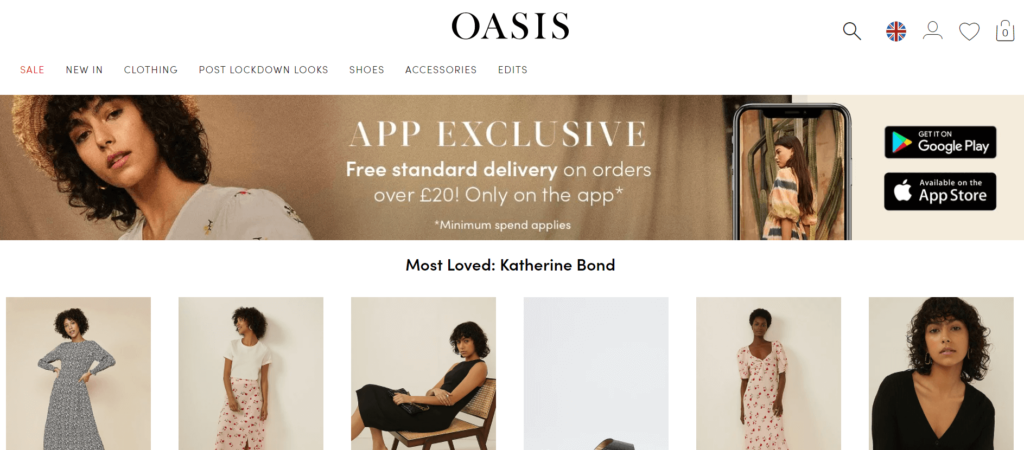
Oasis is a British fashion retailer blending its eCommerce website, mobile app, and brick-and-mortar stores into one unified shopping experience.
The first notable thing in the brand’s strategy is that when you visit a physical store you’ll find sales associates carrying iPads. This allows them to give you accurate information about products on the spot. The best thing, though, is that you can pay using the iPad, without the need to go to a counter.
In case something is out of stock, you get it ordered and delivered to your home address. Oasis’ omnichannel strategy also includes a smart mobile app that enables customers to browse styles, track orders, and more.
The omnichannel experience is supplemented by wonderful Instagram marketing. Apart from user-generated content, you’ll find posts with shoppable items that customers can purchase without leaving the app.
Example #2: Disney

Disney is probably the champion of omnichannel marketing and for many other brands, they are a prime example to follow.
The whole experience starts with their website, which is fully responsive and optimized for every device. The same applies to their trip planning website, which you don’t see very often.
After you’ve booked your trip, you can hop into the “My Disney Experience” tool and plan every last detail about your trip. Once you’re at the park, you can use the app to locate the attractions that you’re interested in as well as view the estimated wait times in real-time.
The brand recently introduced its latest addition to a true omnichannel experience, which is no else than the Magic Band program. Through this wristband, visitors can unlock their hotel rooms, enter the various parks, order food, check-in at FastPass entrances for rides and connect to their Disney PhotoPass account.
In short, Disney has achieved the “definition of omnichannel marketing”, which is a unified and effortless experience for its customers every step of the way.
Example #3: Amazon
Amazon is definitely among the greatest omnichannel examples in the eCommerce industry. What started as an online purchase model quickly evolved into a true omnichannel experience.
Amazon customers have access to their profiles and all relevant details through numerous channels such as the website, the mobile app, Alexa devices, their smartwatches, and in-store.
Moreover, they can use their Amazon cards virtually everywhere without compromising the overall experience. They can place and track orders as well as decide whether they want to pick up an item in-store or have it delivered at their home.
Repeat purchases are also a breeze since users can instruct Alexa to add the item to their shopping cart instead of adding it manually through their smartphone.
Overall, Amazon has invested in providing their customers a seamless shopping experience based on the (correct) assumption that customers fluidly cross between different channels.
So, the takeaway here is that to achieve a true omnichannel experience, you need to eliminate the “effort” from the customer’s side.
Example #4: Sephora
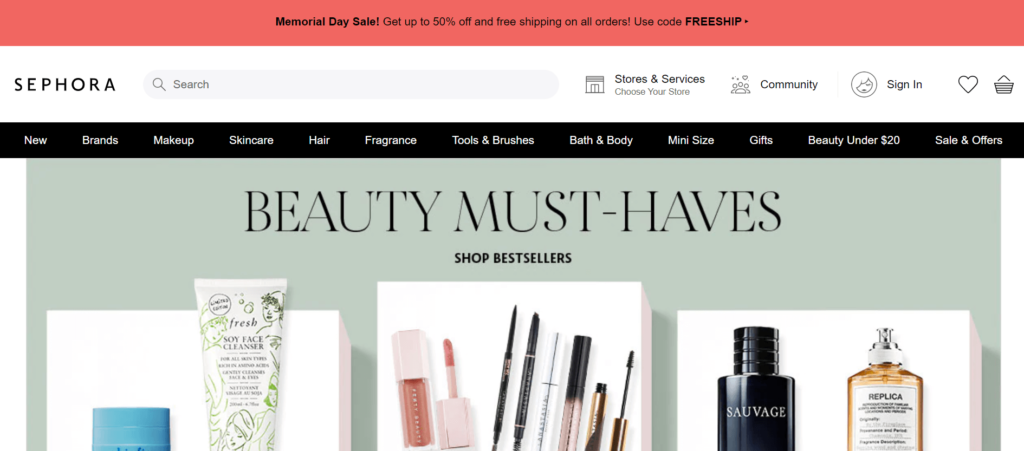
While Sephora technically falls into the category of online retail, it is a prime example of a brand connecting its huge online presence with offline visits to create an omnichannel experience.
Apart from beauty workshops, useful tips, and complimentary makeovers, customers can tap into their “Loves” list through iPads in-store and get access to tons of data.
Sephora understands that its shoppers have a lot of options when they come into one of their stores, so they want to minimize “effort” and help consumers track down the products they intend to purchase.
This omnichannel approach to marketing has allowed Sephora to almost double its mobile orders.
Now Over To You
The transition to an omnichannel marketing approach starts with putting your customers first.
Ecommerce businesses implementing an omnichannel marketing strategy will not only see an increase in the customer lifetime value, but they will also reap the benefits of standing out from their competitors.
With the right email marketing and marketing automation tools, as well as a robust customer data platform, you can offer your customers a truly seamless experience that they will thank you for.
The future of eCommerce is omnichannel.



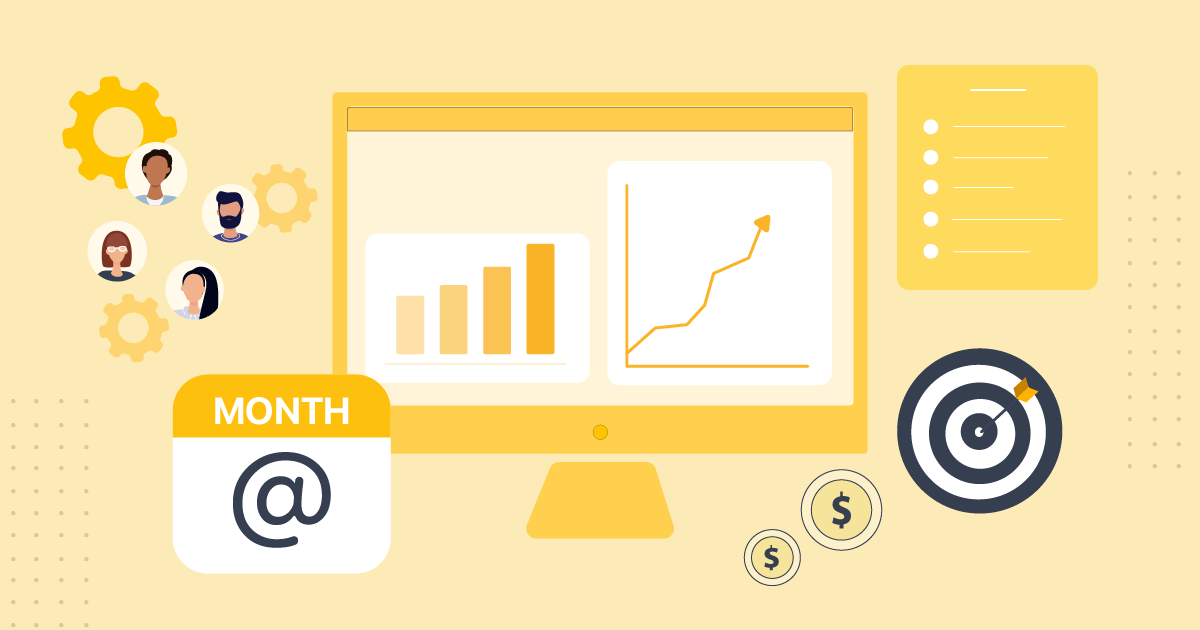
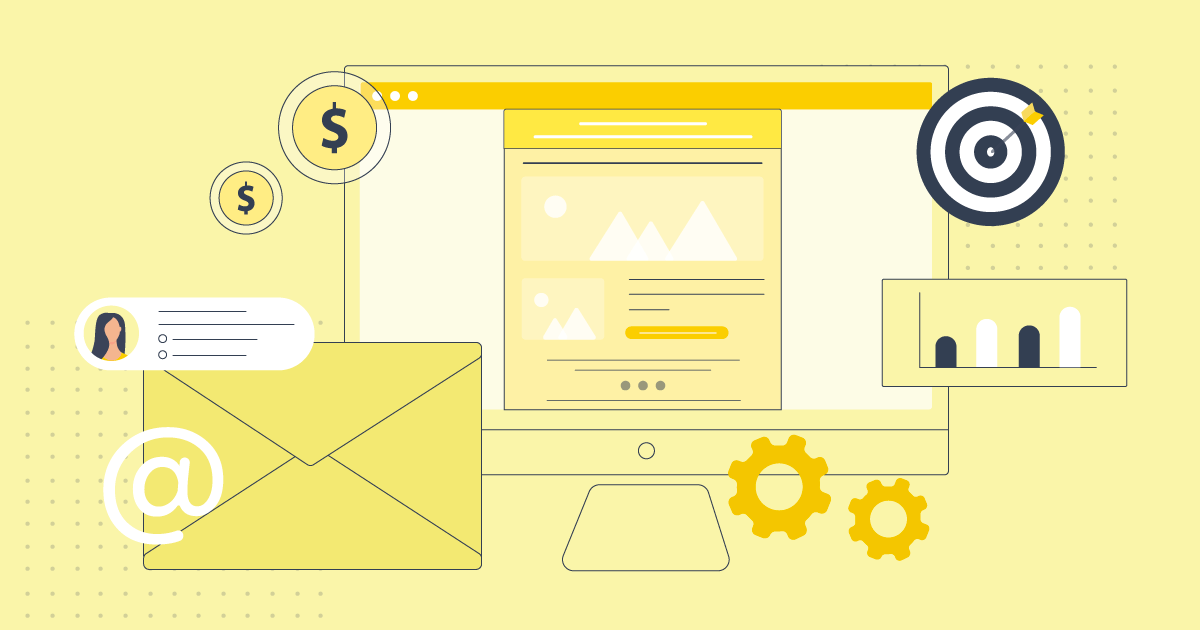
 Published by
Published by
